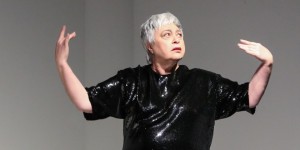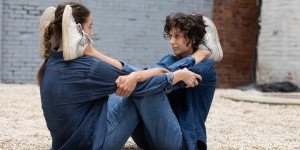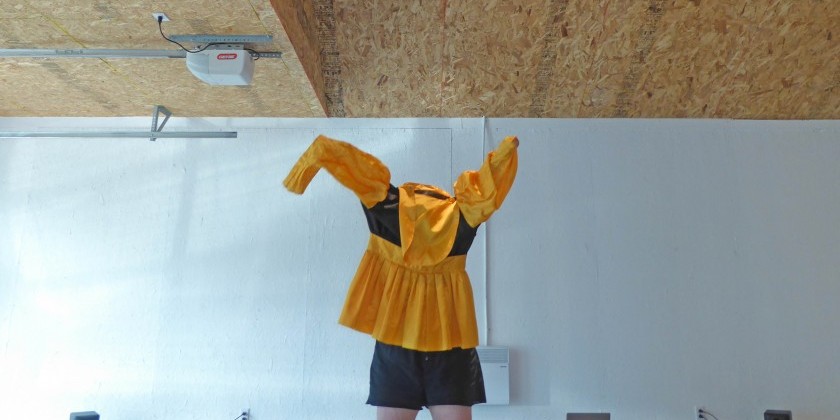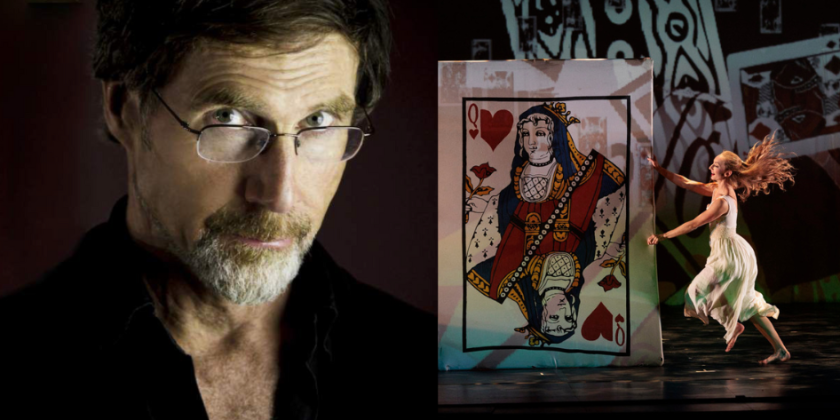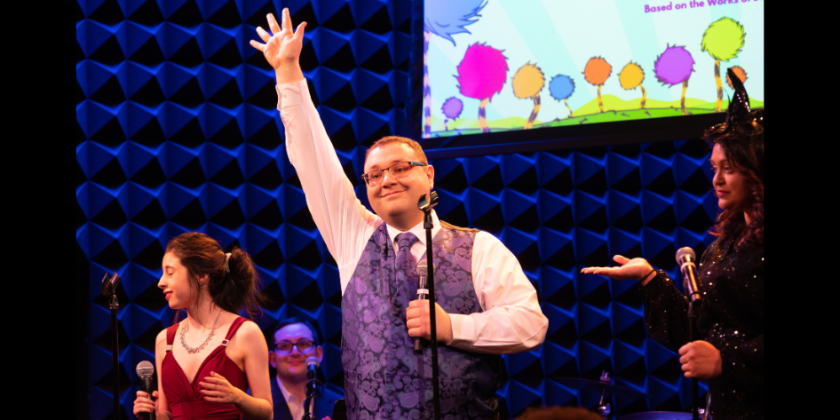THE DANCE ENTHUSIAST ASKS: Lara Kramer Brings "Gorgeous Tongue" to 39th Performance Mix Festival

New Dance Alliance's Annual Festival Returns from June 5 - 8, 2025 at Abrons Arts Center
Montreal-based artist Lara Kramer brings her evocative solo work Gorgeous Tongue to New York as part of the 39th Annual Performance Mix Festival, running from June 5 - 8, 2025, at Abrons Arts Center's Underground Theater. Known for its commitment to experimental and cross-disciplinary performance, the festival features over 40 artists from around the world and includes a special workshop and panel led by Kramer.
Kramer speaks with The Dance Enthusiast about the deep personal and cultural roots of her piece, her Anishinaabe lineage, and the role of embodied awareness and time in her creative practice.
TICKETS: ci.ovationtix.com
JUNE 6 WORKSHOP: Email admin@newdancealliance.org
Theo Boguszewski for The Dance Enthusiast: Gorgeous Tongue is described as a celebration of Indigenous transmission, transformation, and futurity. Can you share more about what inspired this piece and how it developed?
Lara Kramer: I’ve been on my own venture for a while now, and I have about six years of doing a lot of research, practice and development of solo work. Through my kinship with (Nehiyaw/ Metis dance artist) Jeanette Kotowich, who is the artist I first created this solo on, there was a desire to start to share my practice. I really wanted to work with another artist to transmit and put language to my work and methodology. And there’s a fluidity between both of us as performers. In exploring the concept with Jeanette, I was curious about varying interior spaces in my body. I was diving into the area of the intestines, the gut; the way in which we connect to our instincts. But also I was thinking about the cosmos and this idea that the interior system within is also this intelligent communication means beyond just ourselves, extending out into the universe. And when we're really attuned to that, there is this notion of time stretching in both directions.
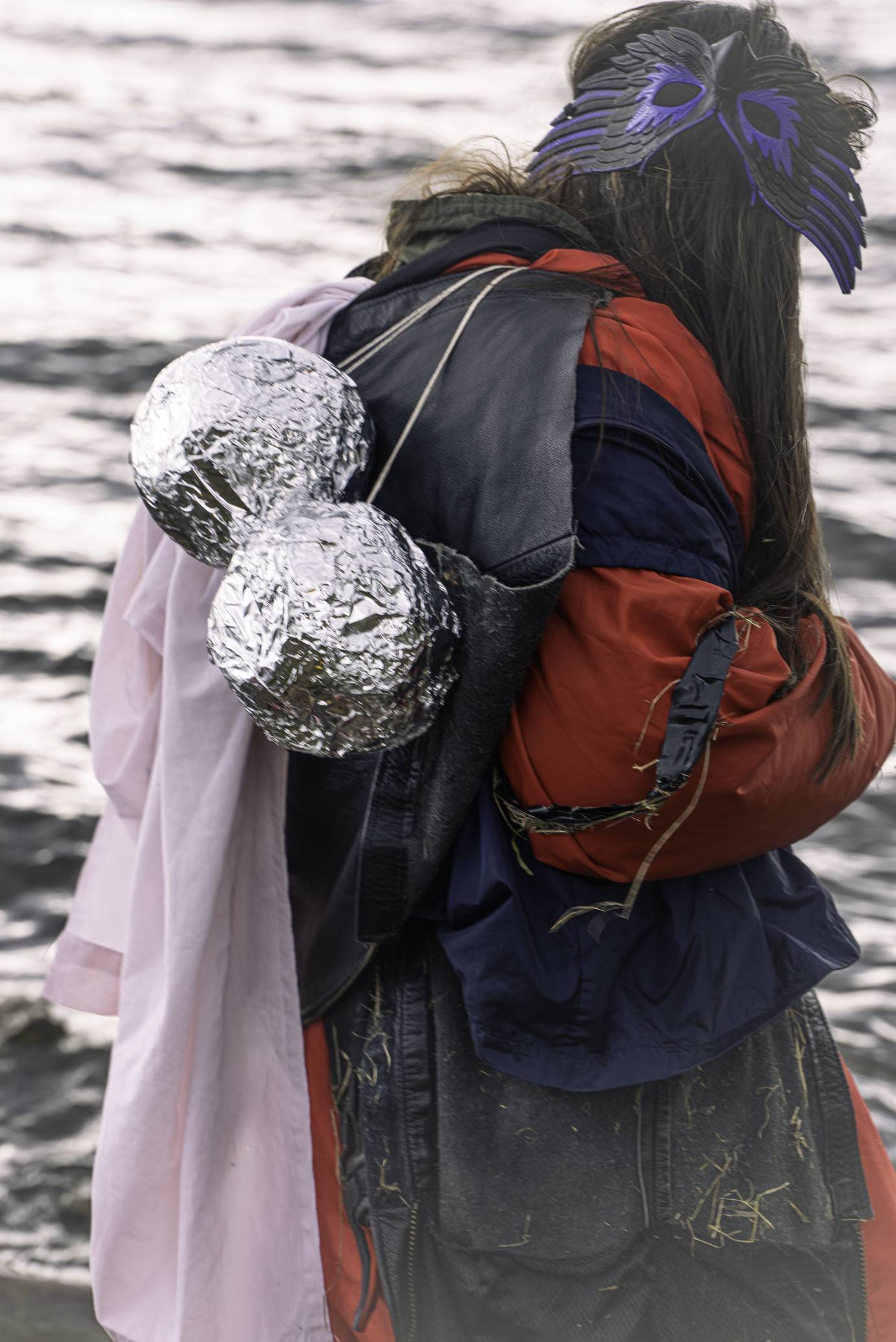
In the early stages in the studio, I did a lot of practice with eyes closed, connecting really deep within and listening to the sensory palette and environment. But then also working to create this landscape where we're not necessarily just here, we’re also in this outer universe with this intelligent, non-verbal communication system. So that was a very early seed of the work.
What’s the origin of the title Gorgeous Tongue?
Regarding the title, Gorgeous Tongue; I was in dialogue with Jeanette early on in our practice, talking about our shared indigenous lineage. My mother didn't grow up with her language, the Ojibwa language; she was placed in residential school quite young. But she’s gone through learning it, acquiring it, and now she teaches it. A couple years ago I also started learning the language. And going back to this notion of these instinctual ways of knowing and understanding – when indigenous language has been lost or eradicated, there’s this deep interior knowledge in our bodies that is still inherited; it’s in our DNA. The writer Joëlle Dubé articulated this very clearly in an article about the piece:
“Gorgeous Tongue. The title refers to the violent interruption of Indigenous language transmission, one of many of the many acculturating strategies deployed by the Residential Schools that Ida Baptiste attended. Whereas Baptiste was dispossessed of her language, Kramer was brought up without her mother tongue, Ojibwa; for that reason, the nonverbal and the body became rich vectors of communication for her. But the words “gorgeous tongue” also read as an invitation to reconnect with the primordial knowledge held in our guts: raw, visceral, intuitive, beautiful embodied and incorporated knowledge we—in the Global North—are taught to repress and quiet. In Gorgeous Tongue, all that originates in the mouth is brought forth at once: speech, breath, cries, moisture, taste, thirst.” -Joëlle Dubé
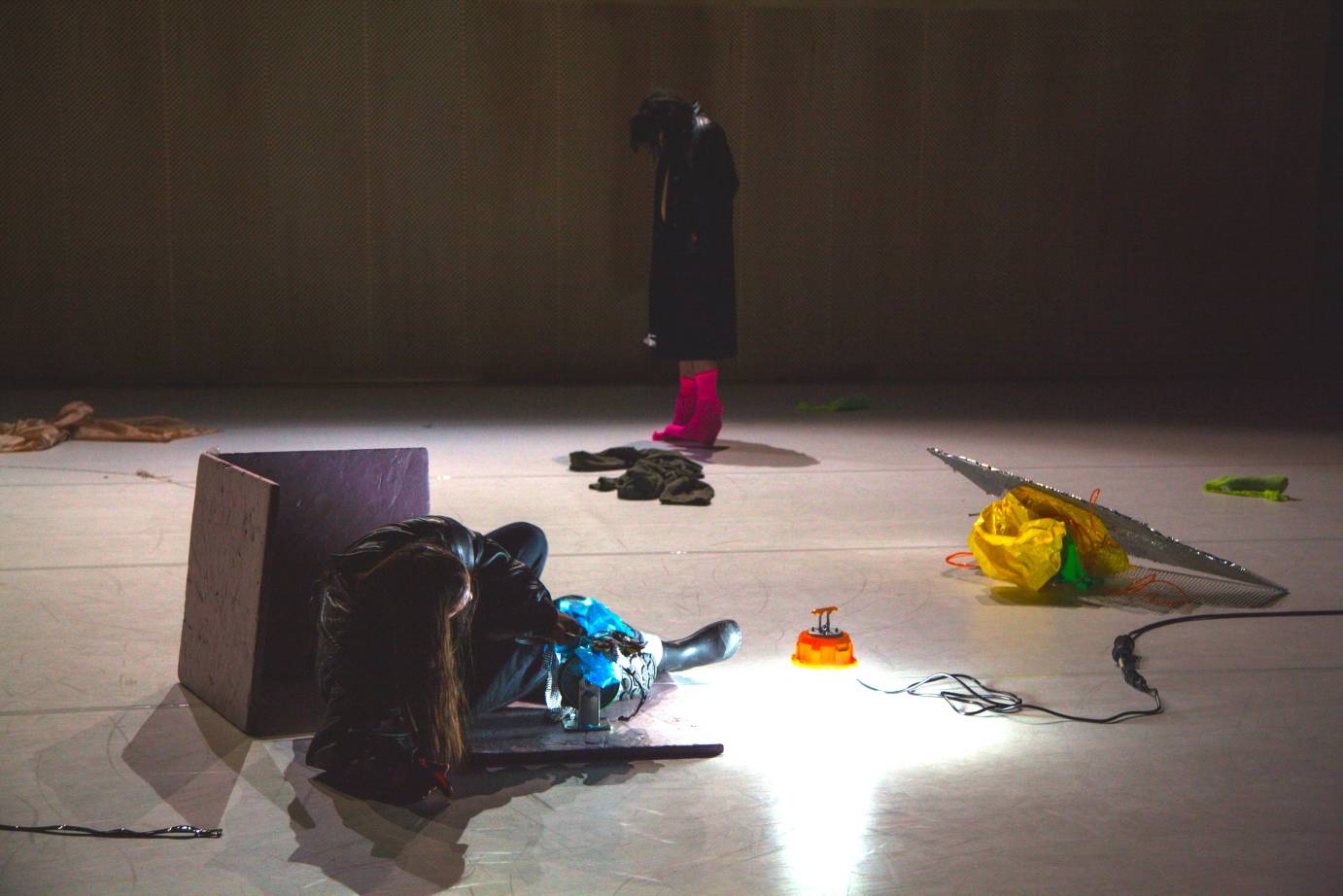
How does your Anishinaabe heritage shape the movement, language and symbolism within the piece?
So much of my work is anchored in an activating of the senses, which is really grounded in this practice of interrelationality to all things. I think of how my body is when I'm visiting ancestral land and really connected to both the inner and environmental landscape. I don't think of the body as in the expressive body, like in these traditional forms of dance or performance, coming from a Eurocentric perspective. I think of it a lot more in terms of the body as being multi dimensional, very much like the environment, like the way water or the landscape transforms in cycles. At the core of all my practice is finding ways to continue to activate and amplify the senses. And so it's like how you would be when you're out in the bush, that acute awareness. In a very pragmatic sense that is what informs my work, my practice; the way in which the body unfolds.
Are there particular memories or stories or dreams that you were drawing from when creating the piece?
There was not one anchoring dream, though I definitely felt there were moments where memories or dreams would show up. The way in which Gorgeous Tongue unfolded, I would start to create a language, a visual landscape, thinking of these sections like different portals in the universe, starting with a first spaceship landing. The dreams just spark that creativity of storytelling and the permission to not just recall dreams but to continue to witness them unfolding, so you continue to be inside the fantasy.
What was the process like of initially setting this work on someone else and then bringing it into your own body?
The piece was done in layers and stages. I have these memories of Jeanette saying like, "oh, this is really hard right now,” ; she was learning the methodology. And I remember saying, “look, at some point it's going to be fun.” I knew she was going to eventually just understand that pendulum of risk and permission. If I'm going to call it “choreography”, there's this blueprint and as the soloist you work within the floor and ceiling of that; you have to play on the edge and then almost rebel against it. And I remember the moment she was just like, “okay, I get it now.” And now learning it for myself, I love existing in this place of performance in my own work and universe. Having bore witness to the work with an artist, with Jeanette, has given me the opportunity to continue to deepen the craft and then to be able to go back to it and really dig in, in live performance. There's a level of trust that's really grounded inside of the work. And now, as a performance artist, how do I continue to let it implode?
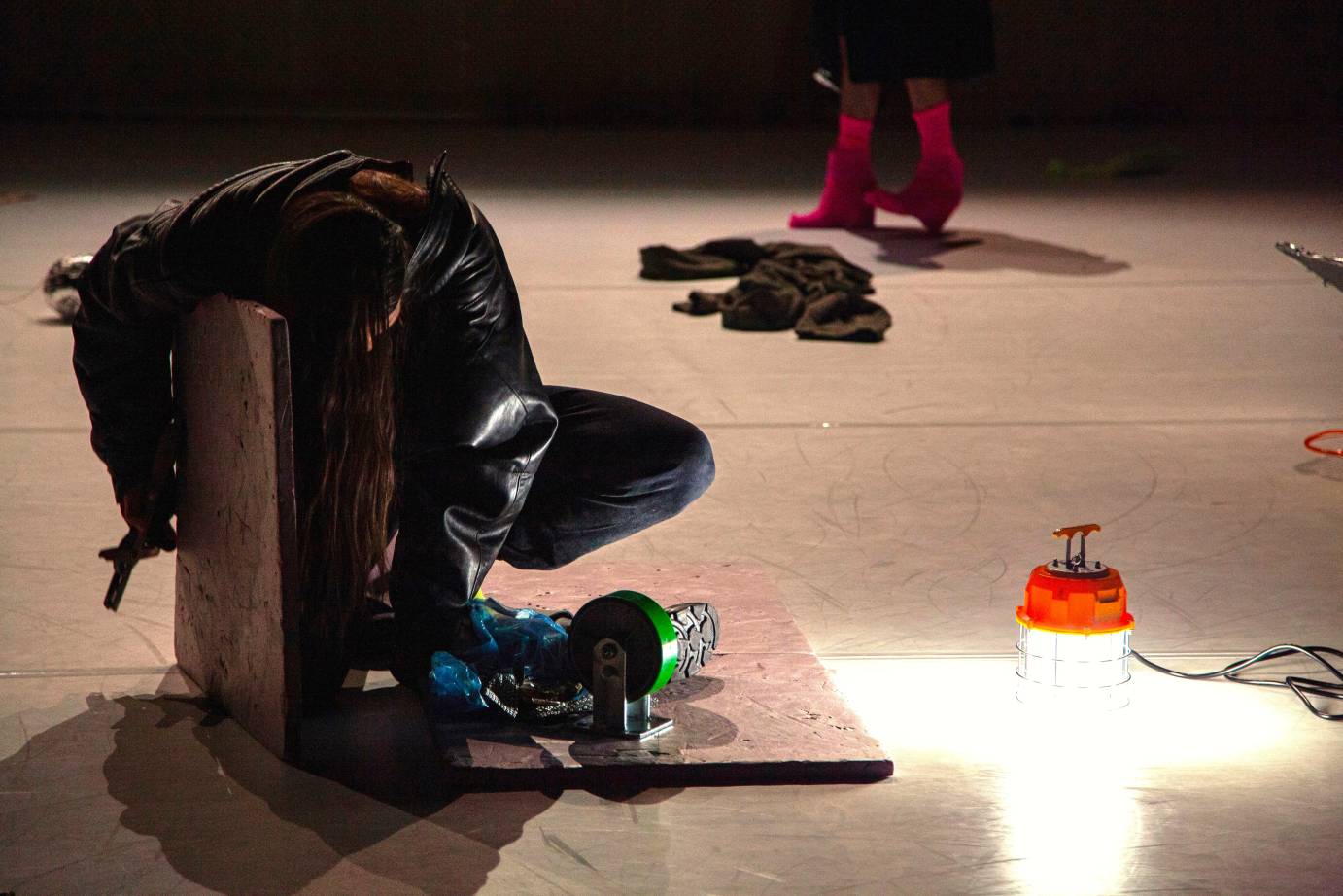
At the festival, you will be offering a workshop, Unfolding Time, which focuses on deceleration and embodied awareness. What led you to develop this creative process?
I think time-based practice is fundamental to what I am doing. It's almost like this deliberate interruption of what is present and around us. When you get in a situation of seeing performance or live art, so often there are these conventional expectations of what work needs to feel like. On a very basic level, if I can help the audience and the public feel really activated with their senses, they're going to have a stronger rapport with the work. And so one way of doing that is essentially creating this opening where they can really slow things down. It's not that the whole work is slow, but there's a moment to open up the digestibility track, just to take things in. Not only is the performer really in this state of hyper awareness of senses, there's this invitation for the public to feel that as well.
What role will storytelling play in the workshop?
It’s not storytelling that I am offering per se, but more facilitating to help folks dive into their own stories. The notion of unfolding time is an invitation for participants to engage in this close, introspective listening. It’s a more experiential kind of storytelling.
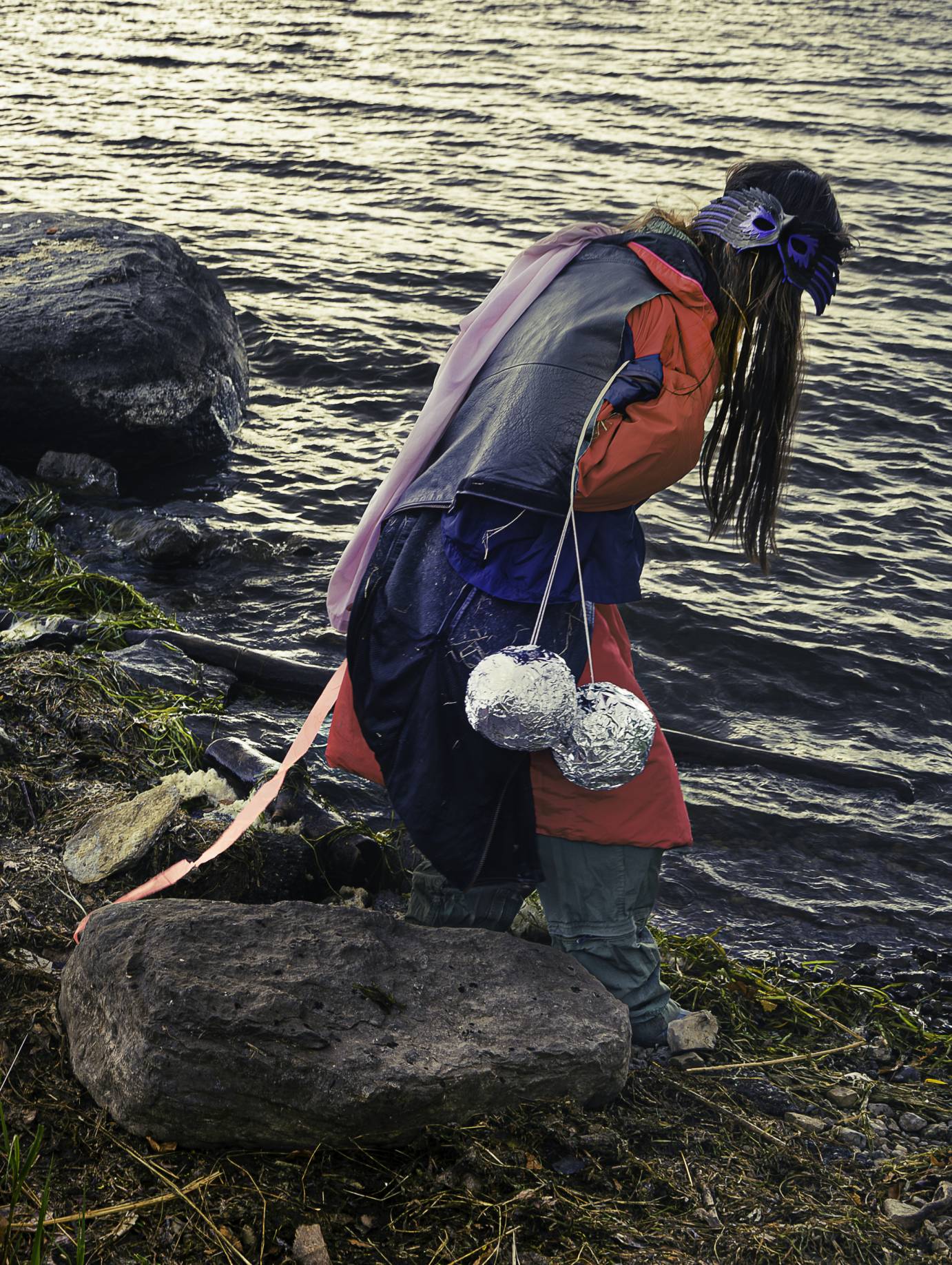
What's next for you artistically? Is there a future iteration of Gorgeous Tongue?
Following this show, Gorgeous Tongue will be in the UK this summer, and then will land again in Montreal later this fall. Jeanette will be performing. It’s one of these networking opportunities on an international scale, an opportunity for presenters to engage with the piece; I’m just hoping to get a bit more life for the work and have it potentially land elsewhere. I am also at this midway point of developing a new creation. Gorgeous Tongue for me was a nice opening for sharing my work and my practice in this very intimate way, and now I'm working with four performers developing a larger work. So that will be coming up in winter of 2026.




